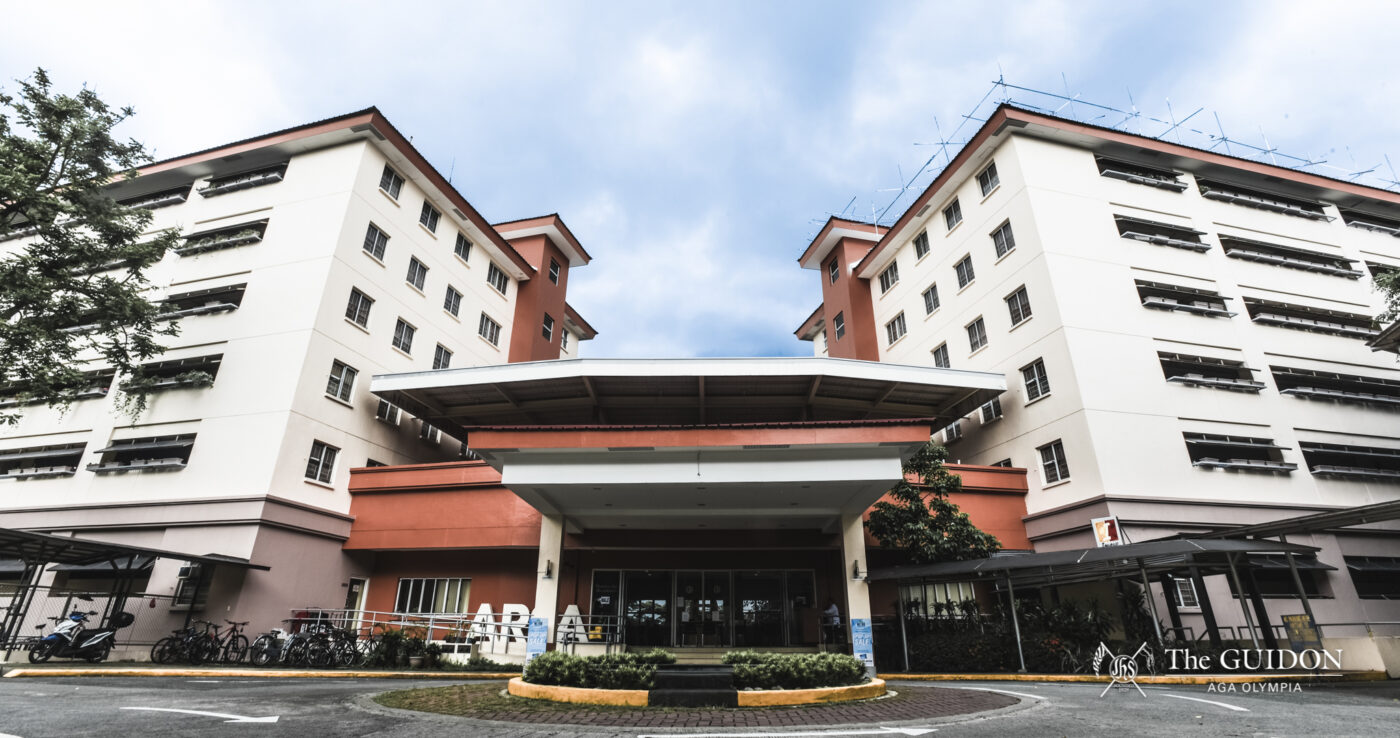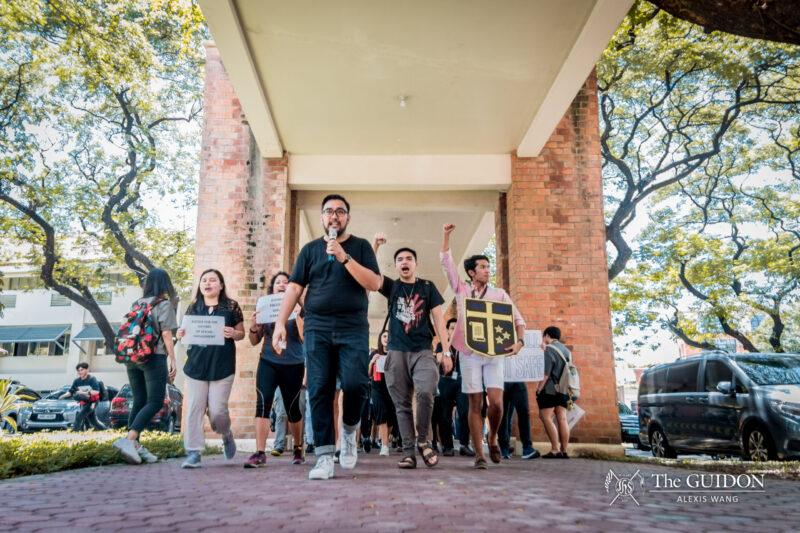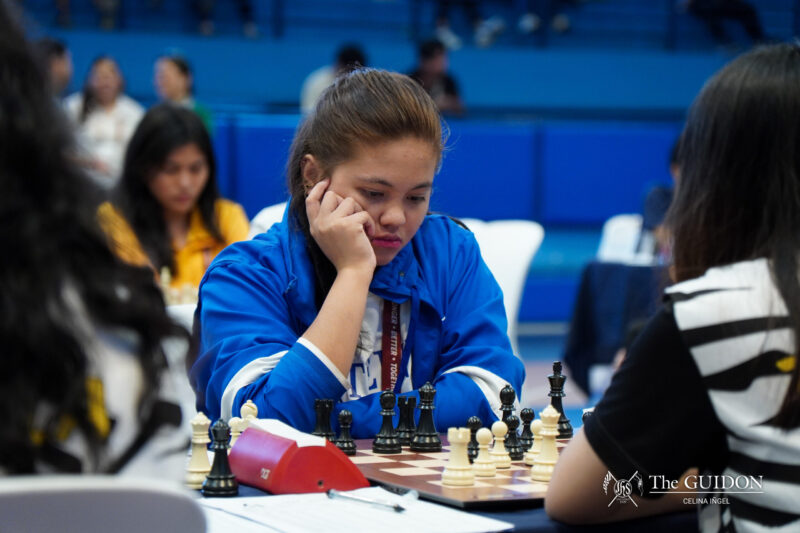DORMERS VOICED their concerns regarding the cultural impact and inconveniences that could result from the Ateneo Residence Halls’ changes in its processes for room assignments through new relocation strategies. These efforts were undertaken by the Residence Halls to accommodate the largest batch of freshmen in Ateneo history.
According to Ateneo Residence Halls Director Rene San Andres, the incoming freshmen will not be assigned to the Cervini and Eliazo halls, which were originally occupied by freshmen prior to school year 2018-2019. Instead, they will be clustered together in the upper floors of the University Dorm (UD) building.
A memo released by the Residence Halls administration on June 18 announced these relocation strategies along with the administration’s decisions to make a resident student’s room assignment valid for one year only, and to invite seniors and superseniors to occupy rooms in the Cervini and Eliazo halls.
Some dormers have responded with dismay at the decision of the administration, such as how it would affect freshman dorm culture and the inconvenience of moving rooms every year.
Post-decision consultation
The Residence Halls administration held a consultation on June 22 with the Ateneo Resident Students Association (ARSA) Central Board to discuss the concerns of dormers regarding the changes in room assignments.
Since the decision to shuffle room assignments came before a consultation ensued, a memo released by the ARSA Central Board on June 19 stated that there was a “need for further clarification” from the administration following the release of the new policies.
The memo also showed that the topics discussed in the consultation included the presence of freshmen in the UD, and the lack of consultation between the Residence Halls and its residents in policy-making.
The ARSA Central Board also said that while the role of the upperclassmen is to make “assimilation of the freshmen into [dormitory] and campus life easier,” the incoming freshmen outnumber the upperclassmen. This makes it a challenge for ARSA to receive the incoming batch.
Distribution of dormers
San Andres said that the Ateneo Residence Halls have received more than 300 freshmen this school year. Meanwhile, Resident Adviser Arlaine Marcelino said that the previous batch of residents numbered around 50.
According to Resident Adviser Martin Manguerra, of the 99 Ateneo High School students in the Residence Halls for this school year, 51 are senior high school students that occupy Eliazo Hall, while 48 currently stay in Cervini Hall. The students in Cervini Hall include senior high school students and some junior high school students playing for the Blue Eaglets.
Manguerra said that the K-12 program had been causing lower population sizes in the dormitories for the past two years, but this year they are expecting a “full house” once again.
The ARSA Central Board stated that students occupying the 5th to 7th floors of UD had to be moved to the lower floors to make space for the incoming freshmen. They also mentioned that students occupying the air conditioned rooms had the choice to either stay or move to the lower floors.
San Andres noted that the budget proposal and income projection made by former Ateneo Residence Halls Director Tim Gabuna showed that because the amount of freshmen has normalized, they are allowed financial “breathing space” compared to the deficit experienced in the past two years.
He mentioned that the increased budget will prevent the University from having to redeploy funds to the Residence Halls due to a lack of income. He said that these redeployed funds would come from other parts of the University’s budget, such as those devoted to faculty development and scholarships.
Resident Adviser Arlaine Marcelino emphasized that the Residence Halls administration was only providing the seniors and superseniors with an “invitation” to move to the Cervini and Eliazo halls.
She said that the administration considered that these buildings could provide a “conducive” environment for students to work on their theses, because these facilities are quieter since fewer dormers reside there. Marcelino also noted that some seniors requested to move to these buildings after being informed of this option.
Dormers’ concerns
One of the resident students, Isa Villanueva (3 BS ME) believes that seniors and superseniors should not be made to move to Eliazo and Cervini Halls. According to her, they would be separated from their underclassmen friends, and this would counter the “greater community living and fellowship” she believes the Residence Halls have.
Another dormer, Leonard Amigo (3 BS ME), felt that the freshmen did not have to be grouped on the same floors since they can visit each others’ rooms and congregate in the lobby and cafeterias.
Amigo noted that the increased number of freshmen would crowd the study halls, and it would increase the use of facilities such as the UD lobby, the cafeterias, and the sole elevators of both the North and South wings of UD.
In order to make space for more freshmen in Eliazo Hall and Cervini Hall, Villanueva suggested making transients stay in the University Dorm instead.
In order to address the influx of freshmen, Amigo also suggested reducing the number of SHS students staying in Cervini and Eliazo, or building another dormitory building for them. He also noted that a dormitory for SHS students should have been built in place of the International Residence Hall (IRH).
Need for SHS student housing
San Andres said that the third floor of the Cervini Hall will be occupied by male Ateneo Senior High School (SHS) students, and an equivalent number of female SHS students will occupy the second floor of Eliazo Hall. He said that this is due to a major decision to give SHS students a place in the Residence Halls.
San Andres also discussed how the Residence Halls administration had a coordination meeting with the Ateneo High School principals regarding the SHS accommodation. The Ateneo High School principals said that the need for student housing is “more pronounced” now that they have more students from outside Metro Manila.
Aside from this, San Andres confirmed that the Residence Halls cannot create plans to accommodate more dormers in the IRH, since it is not under the authority of the Residence Halls administration. Rather, this facility will be maintained by the Office of the Vice President for University and Global Relations, and the Office of International Relations.
Freshman formation
San Andres hopes that by clustering the freshmen together on the 5th to 7th floors, they will develop “similar principles and practices” as they go through the Residence Halls’ freshman formation program.
He said that placing them on the same floors was also necessary because the freshmen will undergo group activities as part of this program. Marcelino mentioned that these group activities include a floor orientation seminar (OrSem) and ARSA OrSem.
San Andres also said that to further “strengthen the formation thrust,”the Residence Halls has designated upperclassmen dormers as ates and kuyas, who will occupy the air-conditioned rooms and solo rooms in the 5th to 7th floors.
He said that while the ates and kuyas will not be given specific duties, they will be presented as role models for the freshmen.
“One of the best sources of [youth] formation is fellow students, so we’re bringing them in or recruiting them as partners,” San Andres said.
As director, San Andres wishes to retain the ate and kuya system. However, he said that whether this system will apply to freshmen assigned to Eliazo and Cervini in the future remains to be seen, since it depends on how the population of dormers will normalize in the future.







